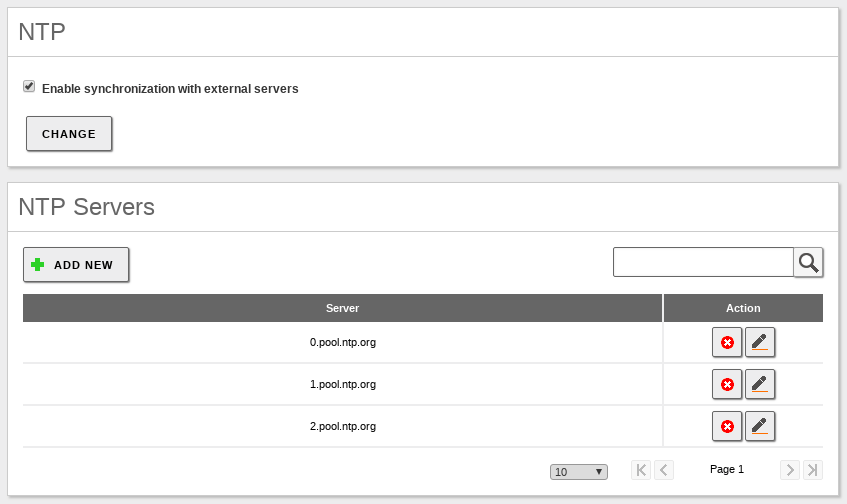Time synchronization service (NTP)¶
Zentyal integrates ntpd [2] as its NTP server. NTP uses UDP port 123.
The recommended way of configuring the NTP parameters for your network clients is by using the Network configuration service (DHCP)
| [2] | NTPD: http://www.eecis.udel.edu/~mills/ntp/html/ntpd.html |
Configuring an NTP server with Zentyal¶
Zentyal uses the NTP server to both, synchronize its own clock and offer this service on the network. It’s generally recommended to install and enable this service in most deployments.
Once you have enabled the module, you can check in that it is running and that the option to manually adjust the time is disabled. You still need to configure your time zone.
If you access to , you can enable or disable the service and choose the external servers that you want to synchronize to. By default the list has already three preconfigured servers chosen from the NTP project [3].
Once Zentyal is synchronized, you can offer your clock timing using the NTP service, generally, through DHCP. As always, you must not forget to check the firewall rules, keeping in mind that NTP is usually enabled only for internal networks.
| [3] | Official NTP servers: http://www.pool.ntp.org/en/ |

